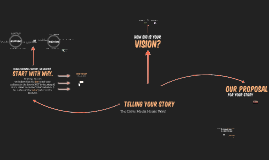Sales Strategy Presentation
Transcript: Understanding Sales Strategy Definition of Sales Strategy A sales strategy is a plan that outlines how a business intends to sell its products or services to customers. It includes targeting specific customer segments, setting revenue goals, and employing tactics to achieve those goals. Market Analysis and Research Importance of a Sales Strategy Conducting thorough market analysis allows businesses to understand industry trends, customer behavior, and competitive landscapes. This knowledge enables the alignment of sales approaches with market demands, boosting effectiveness. A robust sales strategy provides a roadmap for achieving sales targets, aligns the sales team towards common goals, and improves efficiency by prioritizing lead generation methods. Without it, businesses may face inconsistent outcomes and wasted resources. Customer Segmentation Customer segmentation involves dividing a broad target market into subsets of consumers with common needs or characteristics. This enables tailored marketing strategies that resonate with specific groups, leading to increased conversion rates. Key Components of Sales Strategy Key components of a sales strategy include target market identification, sales objectives, value propositions, and sales tactics. Each component plays a vital role in driving successful engagement and closing deals. Evaluating and Adjusting Sales Strategy Gathering Customer Feedback Analyzing Sales Performance Developing a Sales Strategy Sales Strategy Presentation Collecting customer feedback through surveys, interviews, or focus groups helps to understand buyer needs and pain points. Utilizing Net Promoter Score (NPS) and Customer Satisfaction Score (CSAT) provides quantifiable insights for future adjustments. Regular analysis of sales performance identifies trends, highlights successful strategies, and pinpoints underperforming areas. Key metrics such as conversion rates, revenue growth, and customer acquisition costs provide actionable insights to guide decision-making. Continuous Improvement Practices Revising Strategies Based on Data Implementing continuous improvement practices involves fostering an environment of innovation and flexibility. Techniques such as Lean Sales and Agile methodologies can enhance efficiency, responsiveness, and overall sales effectiveness. Data-driven revisions of sales strategies involve analyzing performance results and customer insights. This iterative process allows teams to adapt methods dynamically, ensuring alignment with market needs and business objectives. Choosing Sales Channels Setting Sales Goals and Objectives Selecting the right sales channels is critical for optimizing reach and engagement. Evaluate direct, indirect, online, and offline channels to discover which mix effectively targets your audiences based on their preferences and behaviors. Sales goals provide direction and measurable targets, ensuring alignment with overall business objectives. SMART goals—Specific, Measurable, Achievable, Relevant, Time-bound—offer a structured approach to setting realistic performance expectations within your team. Case Studies of Successful Sales Strategies Analyzing successful case studies provides benchmarks for evaluating effective sales strategies. Companies like Apple and Salesforce demonstrate how innovative approaches can significantly enhance market success and customer loyalty. Competitive Analysis Crafting Value Propositions Conducting a competitive analysis allows businesses to identify strengths and weaknesses within their industry. Evaluate competitor offerings, pricing strategies, and marketing tactics to inform your sales approach and highlight unique aspects of your solutions. A strong value proposition articulates what sets a product or service apart from competitors. It should clearly communicate tangible benefits and address customer pain points, creating compelling reasons for customers to choose your offering. Sales Forecasting Techniques Sales forecasting techniques utilize historical data, market trends, and analytics to predict future sales performance. Accurate forecasting helps in resource allocation and may include methods like time series analysis or regression analysis for precise results. Implementing the Sales Strategy Training and Onboarding Sales Team A well-structured training program ensures that sales personnel understand the products, pitch strategies, and customer engagement techniques. Onboarding should include simulations and role-playing to build confidence and skills before engaging with clients. Performance Metrics to Track Sales Tools and Technology To assess strategy effectiveness, track metrics such as conversion rates, revenue per sale, and customer acquisition costs. A balanced scorecard approach can provide comprehensive insights into sales performance over time. Utilizing CRM systems, automation tools, and analytics software can streamline sales processes and enhance productivity. Following analysis,

















